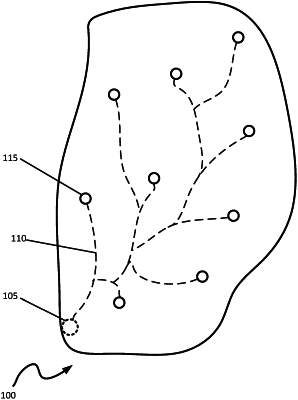| CPC B29C 64/386 (2017.08) [B33Y 50/00 (2014.12); G06F 30/10 (2020.01); G06F 2119/18 (2020.01)] | 18 Claims |

|
1. A system comprising:
a processor; and
a memory storing instructions executable by the processor to:
receive design data for an object including information about a geometry and load characteristics of the object;
generate fluidic data representing a fluid channel to be included within the object;
generate print data based on the design data, the print data corresponding to structural features of the object generated separately from the fluid channel represented by the fluidic data, the print data generated in a first format usable by a three-dimensional printer to print the object without the fluid channel;
merge the fluidic data and the print data to generate an output file in a second format usable by the three-dimensional printer to three-dimensionally print the object with the fluid channel; and
cause the three-dimensional printer to three-dimensionally print the object with the fluid channel in accordance with the output file to physically generate the object with the fluid channel.
|